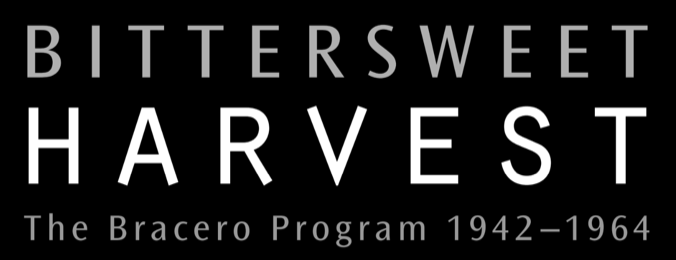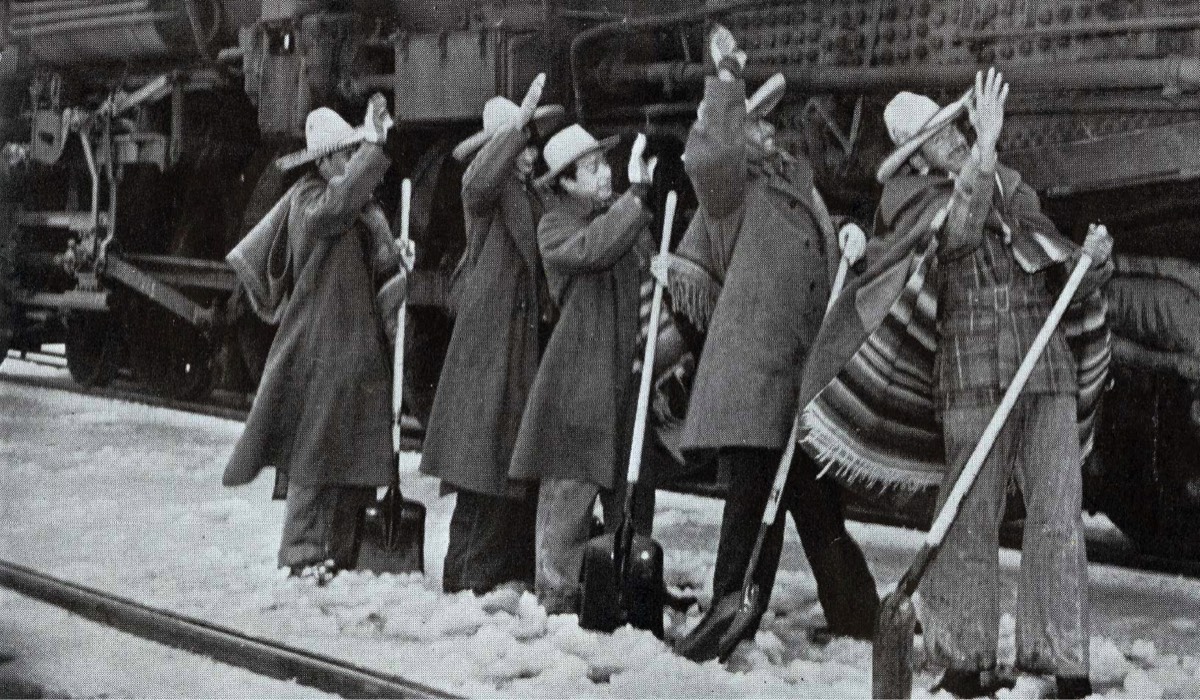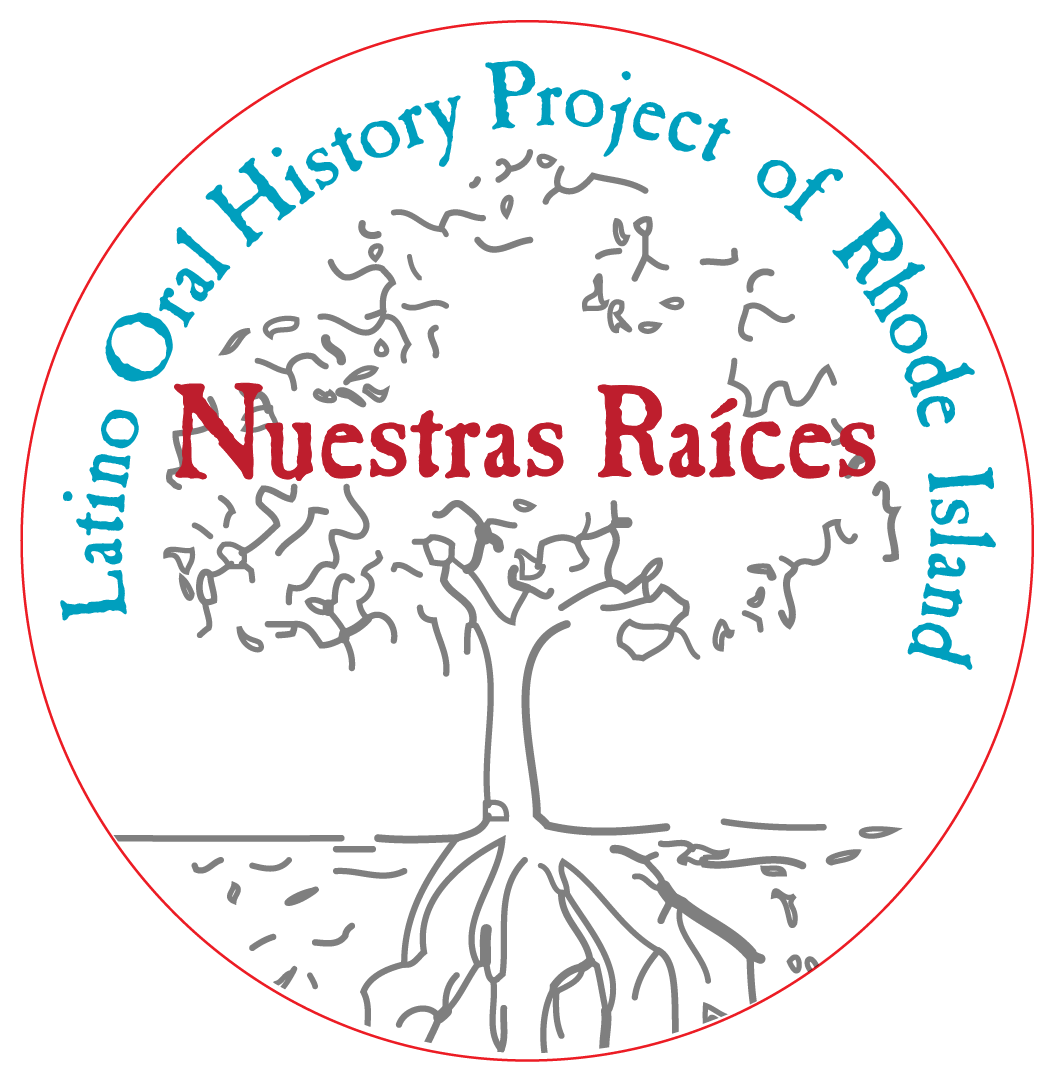The Bracero Program
World War II fueled migration by Latinos to the United States. As defense industries grew and many workers went off to war, industries experienced acute labor shortages. Temporary workers were brought through Operation Bootstrap from Puerto Rico from Mexico through the Bracero Program, a 1942 labor agreement between the U.S. and Mexico.
The Bracero Program is better known for its contributions to agriculture, but there was another industry that benefited from bracero labor—the railroad. Between 1943 and 1945, over 300,000 contracts were signed to recruit and transport Mexican workers to cities all around the United States for employment on the railroads. The New Haven Railroad participated in the program by hiring several hundreds of workers in 1944 and 1945. The men were men brought north on the long trek to help relieve our dire labor shortage by working as laborers.
The men arrived in New England in January 3, 1944, their first stop was in Connecticut: New Haven (140 men), Guilford (40 men) and Midway (60 men). They then headed north to Rhode Island where 80 men arrived in East Greenwich at 4:45 am, on the chilly early morning hours of Monday, January 4, 1944. Their arrival completed a journey of 3,709 miles, which had started six days earlier in Mexico City. Before completion of their first day in New England a wet snow came down, which turned into ankle-deep slush the next morning!
As in the fields of the southwest, they performed mostly manual labor: laying track, cleaning fires, unloading coal, and shoveling sand.
By March 31st, a second group of 82 Mexicans arrived in East Greenwich and joined earlier arrivals at the railroad labor camp, for a total 142 men who were engaged in the track maintenance work.
While in other cities it was reported that Mexican laborers were found living in substandard conditions in box car camps, had little contact with the general population and limited access to healthcare, recreation, translators, or legal aid a newspaper article notes that in Rhode Island laborers were given a six-month contract, lived 20 in "special quarters near Rocky Hill road along the right way, south of the East Greenwich freight depot." They reportedly were provided “a hearty meal” on a daily basis: "Described as quiet and religious, the workers [were provided] a small chapel and recreation hall, in addition to a dormitory where they slept in double-decker bunks." Most of them, according to the article, were mechanics or carpenters in their native Mexico.
On several occasions, the men were entertained by El Club Panamericano members from the International Institute of Rhode Island (IIR), which was a volunteer group consisting of a small group of Spanish-speaking individuals and their supporters from Providence. El Club and IIRI helped with weekly English classes, recreational activities, and shopping. It organized sports events and day trips, and Sunday evening fiestas that sometimes drew over 100 guests and featured traditional music and food. Records do not show that El Club Panamericano was called upon to mediate legal disputes, but instead there was a representative from the Mexican consulate present and called upon to handle disputes and to act as translator.
During that time, a total of 1,658 Mexican workers had put in approximately 3,780 hours for the Providence-New Haven railroad as the serious manpower shortage which existed during WWI progressed.
Civilian railroad employees who had left local firms to serve in the war reclaimed their jobs once they returned. The Mexican workers brought to the United States through the Bracero Program had to return to their home country once their contracts ran out. On December 28, 1945, the last eleven (11) workers left East Greenwich aboard a special train that took some to the Midwest, while others went Northwest, where work on the railroads continued. All had originally been signed for six months, but most renewed their contracts and continued to work.
The Bracero Program is better known for its contributions to agriculture, but there was another industry that benefited from bracero labor—the railroad. Between 1943 and 1945, over 300,000 contracts were signed to recruit and transport Mexican workers to cities all around the United States for employment on the railroads. The New Haven Railroad participated in the program by hiring several hundreds of workers in 1944 and 1945. The men were men brought north on the long trek to help relieve our dire labor shortage by working as laborers.
The men arrived in New England in January 3, 1944, their first stop was in Connecticut: New Haven (140 men), Guilford (40 men) and Midway (60 men). They then headed north to Rhode Island where 80 men arrived in East Greenwich at 4:45 am, on the chilly early morning hours of Monday, January 4, 1944. Their arrival completed a journey of 3,709 miles, which had started six days earlier in Mexico City. Before completion of their first day in New England a wet snow came down, which turned into ankle-deep slush the next morning!
As in the fields of the southwest, they performed mostly manual labor: laying track, cleaning fires, unloading coal, and shoveling sand.
By March 31st, a second group of 82 Mexicans arrived in East Greenwich and joined earlier arrivals at the railroad labor camp, for a total 142 men who were engaged in the track maintenance work.
While in other cities it was reported that Mexican laborers were found living in substandard conditions in box car camps, had little contact with the general population and limited access to healthcare, recreation, translators, or legal aid a newspaper article notes that in Rhode Island laborers were given a six-month contract, lived 20 in "special quarters near Rocky Hill road along the right way, south of the East Greenwich freight depot." They reportedly were provided “a hearty meal” on a daily basis: "Described as quiet and religious, the workers [were provided] a small chapel and recreation hall, in addition to a dormitory where they slept in double-decker bunks." Most of them, according to the article, were mechanics or carpenters in their native Mexico.
On several occasions, the men were entertained by El Club Panamericano members from the International Institute of Rhode Island (IIR), which was a volunteer group consisting of a small group of Spanish-speaking individuals and their supporters from Providence. El Club and IIRI helped with weekly English classes, recreational activities, and shopping. It organized sports events and day trips, and Sunday evening fiestas that sometimes drew over 100 guests and featured traditional music and food. Records do not show that El Club Panamericano was called upon to mediate legal disputes, but instead there was a representative from the Mexican consulate present and called upon to handle disputes and to act as translator.
During that time, a total of 1,658 Mexican workers had put in approximately 3,780 hours for the Providence-New Haven railroad as the serious manpower shortage which existed during WWI progressed.
Civilian railroad employees who had left local firms to serve in the war reclaimed their jobs once they returned. The Mexican workers brought to the United States through the Bracero Program had to return to their home country once their contracts ran out. On December 28, 1945, the last eleven (11) workers left East Greenwich aboard a special train that took some to the Midwest, while others went Northwest, where work on the railroads continued. All had originally been signed for six months, but most renewed their contracts and continued to work.
VICTORIANO ASTORGA of Atotonilco, Durango and Lucas González of Jalisco, part of a group of 60 laborers from Mexico City and vicinity, are shown awaiting their turn for outfitting in warm reclaimed Army clothes at East Greenwich, yesterday. This morning the whole group will go to work for the New Haven Railrod as track and maintenance crews.
Providence Journal photo, January 5, 1944

Agricultural Workers
In the 1940s, as men and women enlisted in WWII, and then through the 1950s, there was an abundance of jobs in meat-packing plants, utility companies, construction, trucking and eventually in agricultural trades such as sugar-beet fields in Michigan and tobacco, vegetable and fruit fields in New England. These jobs were the kind that did not require special skills or the ability to speak English.
Rhode Island had its share of agricultural farms in South County and Middletown during this time, and with it came a need for cheap labor and dedication. Mexican workers and other non-English-speaking immigrants, who were available to provide this labor were hired to do this work.
Research finds that farms in North Kingstown, Middletown and Portsmouth employed seasonal migrant field workers from Puerto Rico and México. Today that practice continues, but the workers hail mainly from Guatemala and other Central American countries.
Rhode Island had its share of agricultural farms in South County and Middletown during this time, and with it came a need for cheap labor and dedication. Mexican workers and other non-English-speaking immigrants, who were available to provide this labor were hired to do this work.
Research finds that farms in North Kingstown, Middletown and Portsmouth employed seasonal migrant field workers from Puerto Rico and México. Today that practice continues, but the workers hail mainly from Guatemala and other Central American countries.

Bittersweet Harvest is a traveling bilingual Smithsonian poster exhibition that tells stories of the Mexican guest worker program, the Bracero Program, that took place in the mid-20th century. The exhibit was featured at the Museum of Work & Culture (MoWC) in Woonsocket from June 10-September 24, 2022. Also featured were original panels that reveal the little-known history of how the Bracero Program was implemented in Rhode Island.
This Kind of Love created with information from Nuestras Raíces presents the history of Latino settlement and community-building over the past half-century in Rhode Island’s Blackstone Valley region, from Central Falls to Woonsocket. Historical artifacts, an art installation, and collected oral histories will complement the informational posters, making these stories come alive.
Voces de Woonsocket
Nuestras Raíces and volunteers from the MoWC traveled around Woonsocket, during the length of the exhibition in 2022, to collect stories of City residents and visitors to the exhibition on these dates: Sun. June 26 at VIDA Church 12-2PM; August 13 at the Museum 12-2PM; and September 22 at Riverzedge 3-5PM.

© All Rights Reserved | Nuestras Raíces: Latino History of RI © | When using materials from this website, please acknowledge by stating the name of the URL of the webpage on which it is displayed. Citations should include full bibliographic information as follows: Courtesy of the Latino Oral History Project of Rhode Island, Central Falls, RI.
This Kind of Love and Bittersweet Harvest are two bilingual complementary exhibitions created with information from Nuestras Raíces and the Smithsonian Institute. The exhibition presents the history of Latino settlement and community-building over the past half-century in Rhode Island’s Blackstone Valley region, from Central Falls to Woonsocket. Historical artifacts, an art installation, and collected oral histories will complement the informational posters, making these stories come alive.
When The Bracero Program comes up, many people think about migrant workers in the West and Southwest working in fields. This Kind of Love will bring to light how Rhode Island participated in The Bracero Program when Mexicans were brought to the East Coast to help lay down tracks to build what today are known as the Providence-Worcester and New Haven Railroad lines.


